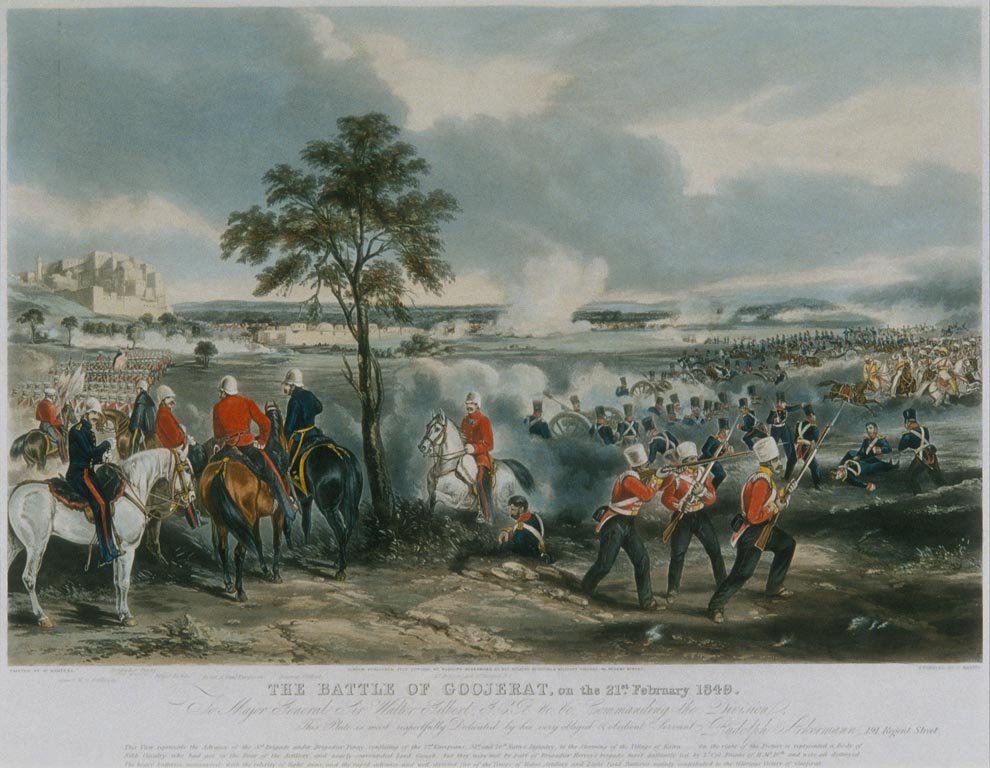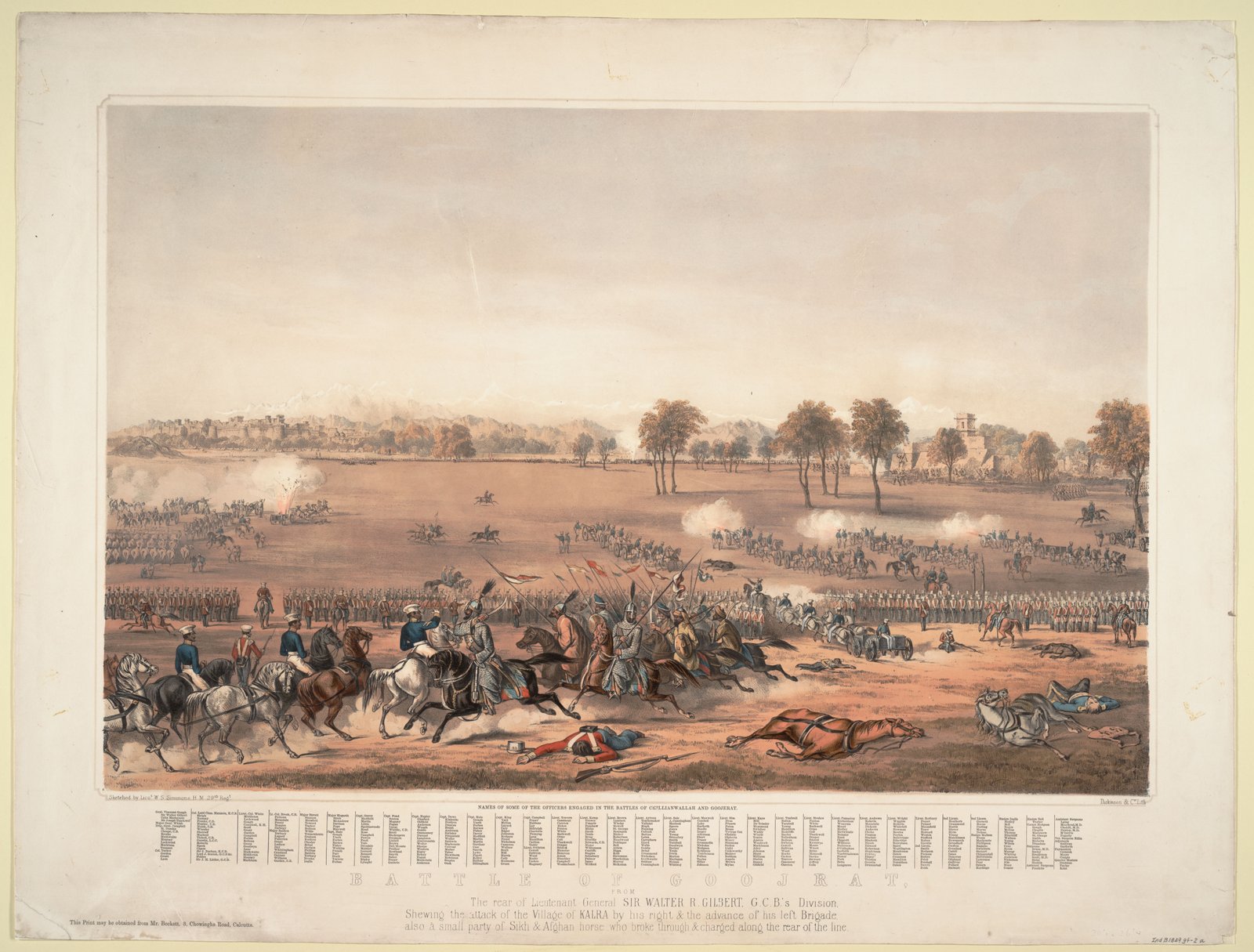
Martens (Henry) The Battle of Goojerat, on the 21st February 1849, hand-coloured aquatint by J. Harris after Marten, image ., R. Ackermann, 1850
Battle of Gujerat(Goojerat)
21st February 1849
After the battle of Chillianwallah, Raja Sher Singh withdrew to Gujarat where his army hastily prepared a defensive position. Gujerat and has been referred to as the ‘Battle of Guns. The British had never amassed so many guns and men in any single battle. The British army now consisted of 56,636 men-four infantry divisions, 11,569 horse, 96 field-guns, and 67 siege-guns including ten 18-pounders and six 8-inch howitzers drawn by elephants.
Raja Sher Singh was joined by his father Chattar Singh and his forces. Hugh Gough was waiting for the divisions of General Whish to join him after the victory at Multan.
The Sikhs constructed a double entrenchment, which was also protected by a ravine. Most of the artillery was grouped in a central battery, screened by hastily planted bushes. The cavalry was deployed on the flanks. Several small villages in advance of the central battery were occupied by infantry, and the houses and buildings were prepared with “loopholes” for defence. Although the position was strong, it was exposed to British artillery fire, and the hastily erected screen of brush was not as effective as the belts of scrub and jungle which had hidden the Sikh artillery from view at Chillianwallah.

Walter Gilbert’s Division being attacked by Sikh and Afghan troops
(Col. lith. by Dickinson & Co. after Simmons; British cavalry in combat with mounted Indians in foreground, infantry and artillery formations advancing on plain in background, walled city in left distance.)
Early on 21 February, Gough advanced against this position. When the Sikh artillery opened fire and disclosed their position, Gough deployed his large numbers of heavy guns against them. In a three-hour artillery duel, the Sikhs were forced to abandon their guns. Once the Sikh artillery was largely silenced, the British infantry advanced. There was desperate hand-to-hand fighting for the small fortified villages of Burra Kalra and Chota Kalra. However, the British guns were being advanced in successive “bounds”, and the Sikhs broke.
Gough reported after the battle:
The heavy artillery continued to advance with extraordinary celerity, taking up successive forward positions, driving the enemy from those [positions] they had retired to, whilst the rapid advance and beautiful fire of the Horse Artillery and light field-batteries … broke the ranks of the enemy at all points. The whole infantry line now rapidly advanced and drove the enemy before it; the nulla [ravine] was cleared, several villages stormed, the guns that were in position carried, the camp captured and the enemy routed in every direction
The Bengal Horse Artillery and British and Indian cavalry took up a ruthless and merciless pursuit, which turned the Sikh retreat into a rout over 12 miles (19 km).
Aftermath
The next day, a division under Major General Sir Walter Gilbert took up the pursuit. The remnants of Sher Singh’s forces retreated across the Jhelum and into progressively rougher country for eleven days, but Sher Singh was finally forced to agree to British terms for surrender. His army, reduced to 20,000 men (mainly irregular cavalry) and 10 guns, handed over its arms at a two-day ceremony on 12 March and disbanded.
The small Afghan contingent also hastily retreated, destroying the pontoon bridge at Attock behind them. Dost Mohammed later concluded a peace with the East India Company, acknowledging their possession of the Peshawar region.
At the end of his career, Gough had finally fought a model battle, using his vast superiority in heavy guns to drive Sher Singh’s troops from their position without resorting to the bayonet as he usually did, and turning their retreat into a rout with his cavalry and horse artillery. He had also been able to operate for the first time without receiving contradictory instructions from Dalhousie.
The last battle was at “The Sikhs,” commented Lord Dalhousie, “displayed the skill, courage and activity which belong to their race.” With the decisive British victory at Gujrat the hostilities ended on 11 March 1849. Lord Gough repaired his reputation as a commander.
